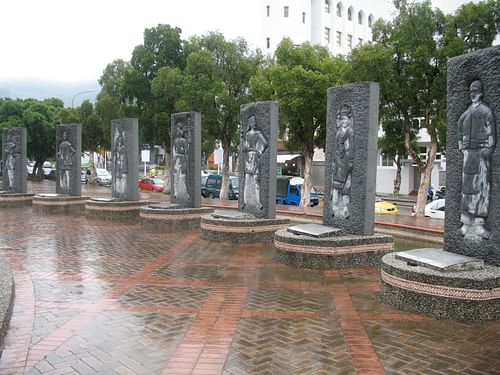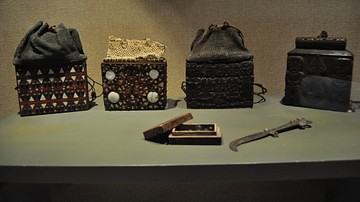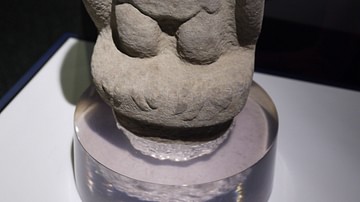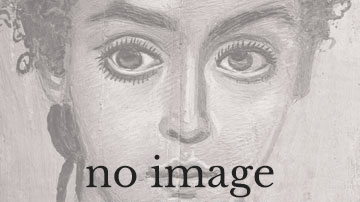Indigenous peoples of Austronesian ancestry are the original inhabitants of Taiwan. Taiwanese indigenous peoples — formerly called Taiwanese aborigines, Formosan people, and Gaoshan (臺灣原住民族) — lived in relative isolation for over 5,000 years until the 16th and 17th centuries. Successive waves of colonization by the Chinese, Spanish, Dutch, Manchus, and Japanese each took their toll on the Taiwanese indigenous peoples, but today, they are experiencing a cultural renaissance.
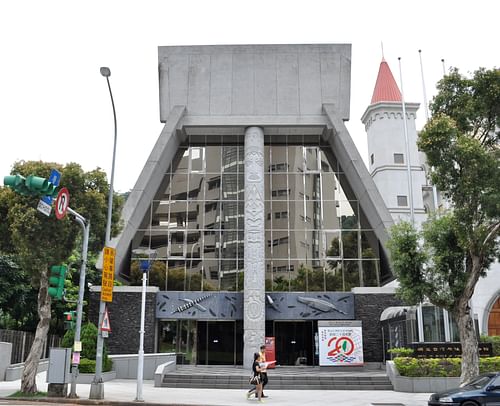
In this interview, James Blake Wiener speaks to Annie Liu, International Coordinator at the Shung Ye Museum of Formosan Aborigines in Taipei, Taiwan, about her museum in addition to the cultures and histories of one of Asia’s most obscured indigenous peoples.
JBW: Annie, many see Taiwan as a young, modern, East Asian island nation. However, Taiwan has a very rich history, which extends deep into the past. Why do so few people outside of Taiwan know about the Taiwanese indigenous population? What has your museum done to redress?
AL: Although few people outside of Taiwan know about the Taiwanese indigenous peoples, they are aware of the existence of the local indigenous groups in their country for sure. As a matter of fact, many indigenous peoples around the Pacific Ocean have similarities in their culture and languages. Those indigenous peoples, called the Austronesians in general, even have similar DNA structures. Since Taiwanese indigenous peoples are part of the Austronesians, it becomes easier for people around the Pacific Ocean to connect their local indigenous peoples to Taiwanese indigenous peoples. That is also why most foreign visitors are amazed to find connections between Taiwanese indigenous peoples and their local indigenous peoples when they come to our museum, even for visitors from non-Pacific Ocean regions.
Located across the street from the National Palace Museum, the Shung Ye Museum of Formosan Aborigines becomes a natural gate of local indigenous culture to foreign visitors. Visitors purchasing the joint tickets of the National Palace Museum and the Shung Ye Museum of Formosan Aborigines enjoy a 20% discount from admissions of both museums. Therefore, we do encourage visitors to purchase joint tickets and get to know the diversified cultures of Taiwan. As for foreign visitors to Taiwan, as soon as they step into our museum with the intention to know more about the island, they always find themselves fascinated by the delicacy of indigenous artifacts. They come to our museum without expecting to see such beautiful artifacts and costumes most of the time, but they are always satisfied with the rich knowledge and exhibitions we offer. Our museum is not only a distinguished museum but also a spot with educational purposes, and a window into Taiwanese indigenous culture. This is why Michelin Green Guide Taiwan recommended Shung Ye Museum of Formosan Aborigines as a two-star spot.
JBW: Most historical linguists consider Taiwan to be the cradle of the Austronesian language family, which is among the largest in the world. Tell us about the ethnic and cultural diversity between the various indigenous tribes in Taiwan —were they significant?
AL: Right now, we have 16 officially recognized indigenous groups in Taiwan; the last two on this list were officially recognized in 2014:
- Amis
- Atayal
- Bunun
- Kavalan
- Paiwan
- Puyuma
- Rukai
- Saisiyat
- Sakizaya
- Sediq
- Tao
- Taroko
- Thao
- Tsou
- Hla'alua
- Kanakanavu
Still, there are other indigenous peoples in Taiwan, called the Pingpu in general, who are trying to get officially recognized by the government. Although there are some similarities in the culture of different indigenous groups, each group has its own significance and characteristics. None of the indigenous people in Taiwan had written language, so everything was passed down orally. Oral history and folklore have become the oldest historical records of Taiwanese indigenous peoples. Still, there are some undeniable connections between Taiwanese indigenous peoples and the rest of Austronesians. For example, the Maori people in New Zealand have similarities between their ancient ballads and the Amis ones in Taiwan. This means they had connections hundreds of years ago. There are more stories like this waiting to be discovered.
JBW: Over 1866 ethnological artifacts are on display at the Shung Ye Museum of Formosan Aborigines, including priceless ceremonial instruments, handicrafts, costumes, utensils, and photographs. The museum also oversees a modern art collection by contemporary indigenous artists. Among the objects on display, which seem to captivate museum visitors the most? What are the star attractions that should not be missed by visitors?
AL: I am proud to say that we have at least one star attraction on each level of the museum. On the first floor, we have this Tao fishing boat, which visitors are always amazed at its beautiful patterns. On the second floor, we have the Paiwan nose flute that visitors are always surprised to find it has to be played with nostrils. On the third floor, we have the Paiwan necklace of glass beads, which you will find almost all kinds of glass beads on it. On the B1 floor, we have the Paiwan and Rukai headdresses, which visitors are always attracted by their colorful decorations.
JBW: The beauty of indigenous Taiwanese weaving and costumes is difficult to ignore. Could you tell us more about the costume collection at the museum, and how the museum acquired these pieces?
AL: All the costume collections for the exhibit are located on the third level of our museum. When you walk into the third level, you will see a horizontal back-strap loom, weaving fibers, traditional and modern costumes of Taiwanese indigenous peoples. Then, when you walk deeper into the third level, you are sure to be amazed by those delicate glass beads and related decorations. By visiting the third level of our museum, all visitors get to appreciate the traditional and modern beauty of the costume of Taiwanese indigenous peoples at the same time.
All the objects in our museum were donated by our founder, Chairman Safe C. F. Lin. He has a huge passion for Taiwanese indigenous objects along with Taiwanese art and started to collect them over 40 years ago. Then, 25 years ago, he established the museum and shared his collection with the public.
JBW: The museum hosts permanent and rotating exhibitions, and it also has a unique collection of rare photographs of indigenous villages. Many indigenous peoples originally built houses from heavy slate as protection against typhoons. Annie, what can you tell us about these houses and the museum’s ethnographic photography collection?
AL: On the second level of our museum, we have a 1:1 scale model of a slate house. It is so real that young visitors are always curious if they could walk into the house model on their own. In the old times, the Rukai and the Paiwan chose slates, which were available in the mountainous areas of southern Taiwan, to build their houses. They used the material because it is strong enough to resist a typhoon, and it also helped to keep the home cool in summer and warm in winter. Besides, the slate house was also built with the entrance low and narrow, which had a defensive function.
As for the museum’s ethnographic photography collection, we are proud that we do have photos with historical meanings and modern background. In this way, the audience has a chance to appreciate the beauty of indigenous artifacts and see the past and present situation of Taiwanese indigenous peoples through photos for display.
JBW: As in the Americas, the indigenous population of Taiwan faced centuries of colonization, marginalization, and assimilation. Nonetheless, some studies show that over 70% of Taiwanese people have some indigenous ancestry today. How do Taiwanese people view the Taiwanese indigenous peoples today? Moreover, why is it important for Taiwanese and foreigners alike to learn more about their histories and cultures?
AL: Taiwanese indigenous peoples are the earliest inhabitants of Taiwan. Undoubtedly, if you would like to know more about the history of Taiwan, indigenous peoples are the group that must not be neglected for sure. Recently, Taiwanese indigenous culture has become an essential part of Taiwan’s basic education. Besides, there has also been an increase in indigenous studies programs in Taiwan’s universities. Even though indigenous peoples are still a minority of Taiwan, the awareness and knowledge for them are growing among Taiwanese.
As for foreigners, even without any background information of Taiwanese indigenous peoples, they could always acquire basic knowledge of Taiwanese indigenous peoples in our museum and get to know and love these people with colorful patterns and optimistic nature. What is more, they are always surprised at the similarities between Taiwanese indigenous peoples and other indigenous groups they know but are also amazed at the unique quality they discover in Taiwanese indigenous culture. For foreigners, Taiwanese indigenous peoples are not complete strangers but more like friends who lost touch years ago. Learning more about Taiwanese indigenous peoples broadens the visitors’ visions and enriches their minds.
JBW: Annie, thank you for introducing us to your museum and for lending your expertise.
AL: Thank you so much, James. It is my pleasure to introduce our museum.

